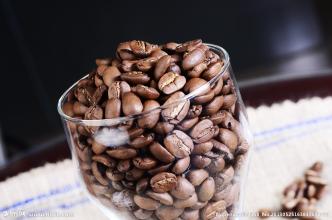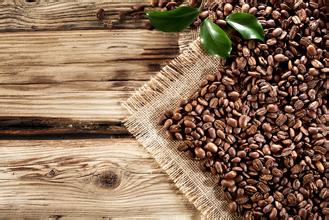The structure name of each part of coffee bean
The structure name of each part of coffee bean
The coffee fruit is wrapped in a hard outer skin (cut skin), the inner layer is gelatinous pulp (pulp), and then the inner layer is endocarp (parchament), and the inside is tightly wrapped in the seed called silver skin, and the inside is wrapped in green seeds, that is, coffee beans.
There are usually two pairs of seeds, each hemispherical, with a plane opposite to each other, forming an ellipsoidal bean called flat bean, and about 5% of the seeds are single ellipsoidal, and this bean is called pea berry. Due to the scarcity of round beans, they are often made into brand-name products with high prices. There is also a sunken groove in the middle of the seed, called center cut, which is also covered with silver skin.
The Robosta coffee tree, which originated in the Congo in Africa, accounts for about 20% of the world's production. 30%. Robesta coffee tree is suitable for planting in the lowlands below 500 meters above sea level, has strong adaptability to the environment, can resist bad climate, resist diseases and insect pests, and does not need much manual care during soil preparation, weeding and pruning, and can be allowed to grow in the wild. It is a kind of coffee tree that is easy to cultivate. But its flavor is more bitter than Arabica, and its quality is much lower, so it is mostly used to make instant coffee. Because it is made in Africa, most Africans drink Robosta coffee. The Liberian coffee tree is produced in Liberia in Africa, and its cultivation history is shorter than that of the other two coffee trees, so the planting is limited to a few places such as Liberia, Surinam and Gaiana. As a result, the output accounts for less than 5% of the world's output. Liberian coffee trees are suitable for planting lowlands, and the coffee beans produced are very fragrant and bitter. Arabica Arabica robusta Robusta is usually grown in the mountains at higher elevations, usually in the lower tropics.

Important Notice :
前街咖啡 FrontStreet Coffee has moved to new addredd:
FrontStreet Coffee Address: 315,Donghua East Road,GuangZhou
Tel:020 38364473
- Prev

Operation of hand coffee grinder-safe operation procedures for grinder
Operation of hand-operated coffee bean grinder-grinder safety operating procedures at the same speed, the number of teeth of the flat knife determines the grinding efficiency. The larger the diameter, the more teeth, the more efficient. Because of the longer blade, the taper knife produces more impedance than the flat knife when grinding, requiring a larger torque motor to drive. The actual grinding efficiency depends on the ratio of speed to blade size (almost all
- Next

Distinction between water washing and semi-washing beans-steps of semi-washing coffee beans
Distinguish beans from semi-washed beans-Coffee beans semi-washed step: first, put the coffee fruit into a large trough, move the red fruit and semi-green and semi-red fruit into the pulp screening machine to remove pulp and impurities. Remove pectin: take out the coffee beans, do not need to take them to the sun, let alone pour them into the sink to ferment, but directly pour into the nearby pectin scraper, only a small amount
Related
- Guji coffee producing area of Guji, Ethiopia: Humbela, Shakiso, Wulaga
- What is the most expensive variety of Qiloso in BOP multi-variety group?
- How to store the coffee beans bought home?
- Why are Yemeni coffee beans so rare now?
- Ethiopian Sidamo all Red Fruit Sun Sun Santa Vini Coffee beans
- SOE is mostly sour? What does it mean? Is it a single bean? what's the difference between it and Italian blending?
- Is Italian coffee beans suitable for making hand-brewed coffee?
- How to choose coffee beans when making cold coffee? What kind of coffee beans are suitable for making cold coffee?
- Just entered the pit to make coffee, what kind of coffee beans should be chosen?
- Can only Japan buy real Blue Mountain Coffee? What are authentic Jamaican Blue Mountain coffee beans?

